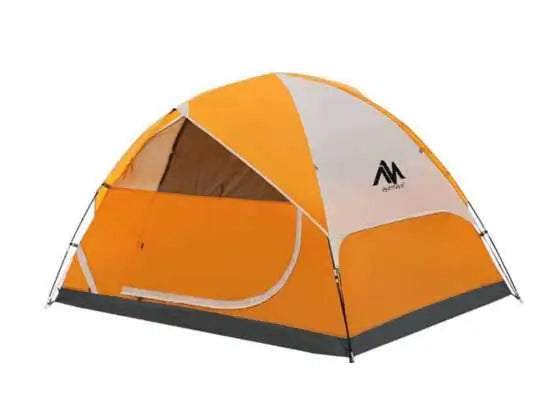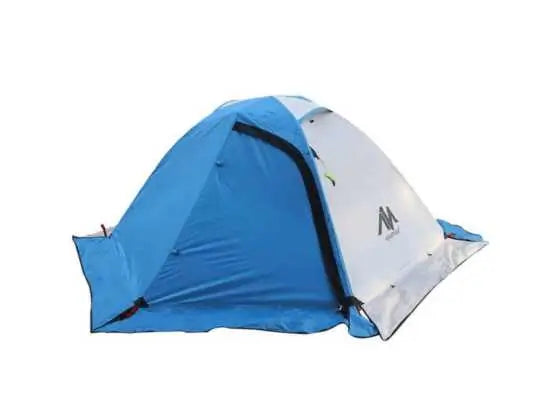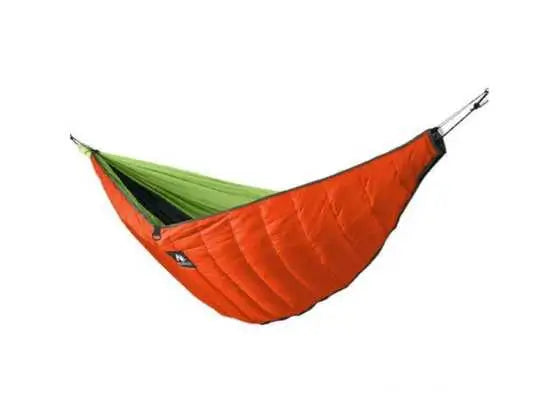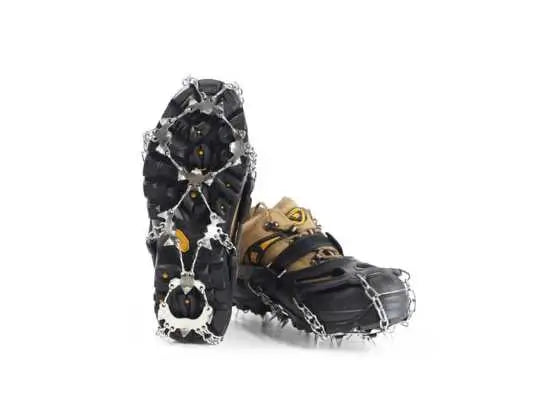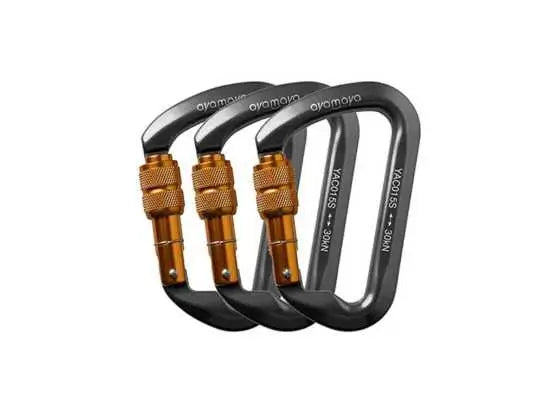We can all remember that feeling our tent gives us as the sun shines upon it in the mid morning. What we once thought was a comfortable tent has turned into an easy bake oven. Our sleeping bags which gave us a warm embrace through the cold months are now a straight jacket poised to trap you with its combustible heat. In the summer, oftentimes a hot tent is a sad tent.

Tent Location
Amid the scorching summer, choosing the perfect location for our tent is crucial to ensure a comfortable and enjoyable camping experience. When setting up camp, seek out a spot that strikes a balance between shade and breeze. While pitching our tent directly under the shade of a large tree may be tempting, be cautious of overhanging branches or dead limbs that could pose a safety hazard. Instead, opt for a spot where the tent will receive some shade during the hottest parts of the day but still allows a gentle breeze to flow through, offering relief from the heat. Unless a hot tent is your thing, tent placement is vital for a comfortable camping experience. Remember that for every 1000' of elevation, temperatures drop on average by 5 degrees. So the higher elevation you set up camp, the colder the temperatures should be depending on the environment.
Prioritize flat ground to avoid discomfort during sleep and prevent rainwater from pooling around our tent during unexpected summer showers. Before pitching our tent, clear the area of any debris or sharp objects that may cause damage. Additionally, consider the direction of the sunrise and sunset to plan our tent's orientation. Placing the entrance facing away from the rising sun gives us a few extra minutes of sleep in the mornings.
Furthermore, be mindful of the campsite's proximity to water sources, as having easy access to water is essential for staying hydrated in the summer heat. But remember to adhere to camping regulations and choose a spot safe from the water's edge to avoid the risk of flash floods.
By considering these factors and using some common sense, we can ensure that our tent is positioned in the right location for a comfortable and memorable summer camping experience.
If we are choosing at a non-traditional campground such as at a summer camp music festival, then we must also try to adjust our strategy. Shade most likely would be at a premium but we can still optimize our tent position so that it maintains the ultimate airflow.

Proper Tent Ventilation
Tent ventilation is an essential aspect of a comfortable and safe camping experience. Proper ventilation ensures fresh air circulates within the tent while expelling excess heat, condensation, and unwanted odors. Well-ventilated tents help regulate the temperature, preventing stuffiness during warm weather and condensation buildup during colder nights. Most modern tents have mesh panels or windows strategically placed to facilitate cross-ventilation. Such tents like the Ayamaya M8 San Gabriel have a ventilated rainfly and tapered vestibule ends so we can experience airflow from the bottom and top of our tent space. These openings allow cool air to enter while allowing warm air to escape, maintaining a pleasant internal environment. This is where double-walled tents shine; features can be added to the rainfly or outer layer to mitigate condensation while still allowing the tent a free flow of air. Single-walled tents are great and have their purpose, but they are known to have more issues with condensation on the inner walls. Because specific designs are made to keep the water out, they may lack ventilation, thus creating overnight condensation or stagnant air.
Certain materials are more porous by nature than others so results may vary, and this is similar when considering a double or single wall for ventilation. So it is essential that when we are outdoors and thinking about what tent we must choose, we consider the capabilities and match it to the environment.
Adequate ventilation not only enhances camper comfort but also helps prevent mold and mildew growth, preserving the tent's lifespan. For campers exploring diverse climates, understanding and utilizing tent ventilation effectively can significantly enhance their camping experience.
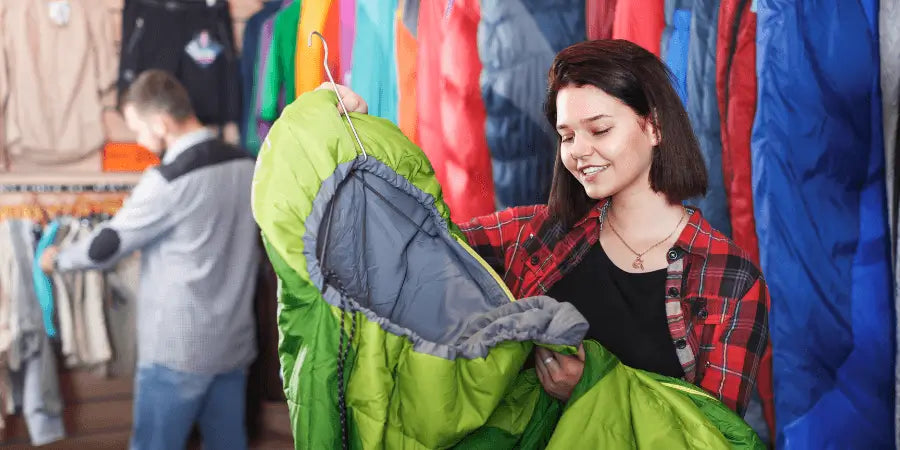
Equipment
Staying cool during the scorching summer months is crucial for a comfortable camping experience, and the right camping equipment, such as sleeping bags and pads, can make all the difference. Opting for summer-specific sleeping bags with lightweight, breathable materials and temperature ratings suited for warmer nights ensures campers stay cool and sweat-free. Sleeping bags have comfort ratings and a lower rating, indicating the temperature that is safe to use in colder weather. In warmer weather, a cold sleeping bag will only be at our disadvantage as it will retain heat very well, causing us to sweat overnight. Look for bags with added ventilation options, such as two-way zippers or foot vents, allowing us to regulate airflow according to our comfort level. One thing to look at is the r-value of sleeping pads. This measures the amount of heat a sleeping pad can retain. A sleeping pad for summer with a lower ranking r-value and satisfactory comfort would be ideal. l. Similarly, selecting sleeping pads made from materials that offer good air circulation and effective heat dispersion can prevent excess warmth from being trapped underneath us. Self-inflating or air-channeling pads provide superior comfort and cooling properties. Additionally, consider using a lightweight, moisture-wicking sleep liner to enhance comfort and manage perspiration. By thoughtfully choosing camping gear that prioritizes breathability and temperature control, campers can beat the summer heat and enjoy a refreshing night's sleep amidst the great outdoors.
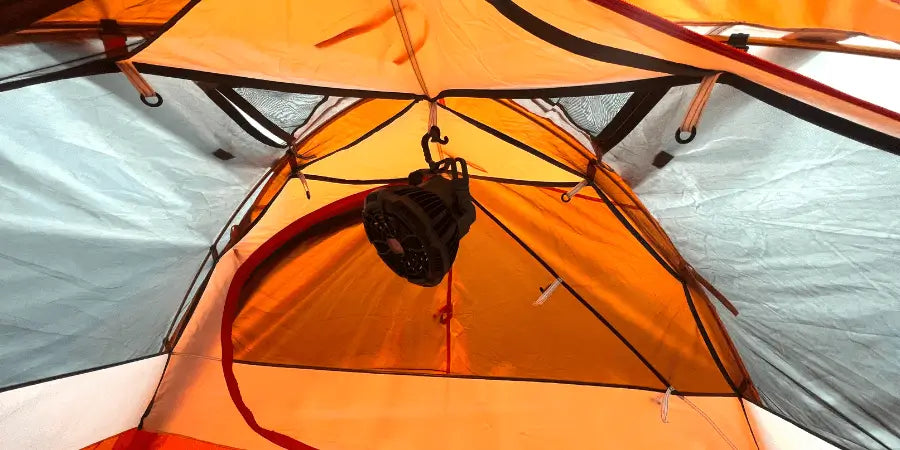
Camping Accessories
If we are sitting in our tent and there is no breeze we may think we have no choice but to learn how to make a paper fan. But there are several options that Ayamaya provides that alleviate the stress of feeling stagnant air in our tents. One of the best ways to create some circulation within your tent is by way of using our Ayamaya Aero Chill Camping Fan, or our Ayamaya Eco Breeze camping fan. Both are hangable by the roof of a tent and can have air circulating all night. Each tent fan is rechargeable and has the capability to run for over 24 hours if left on the lowest speed which still provides a strong downward force of air. Even to break up overnight condensation a great combination is a camping tent with fan. These camping fans can also be used as accessories for a pop up camper to move around the stagnant air through large spaces.
And if you are feeling ambitious there are also companies that have products such as a portable a/c vent fan. The way they work is that a fan runs through a box of cold water or ice through a small tube providing cold refreshing air throughout the duration of the battery life. In conjunction with a tents rain fly venting both a ceiling fan for tent and an a/c vent fan would give quite the chilling effect although that may be over the top. Again these are solid options for pop up camper accessories. Soon our hot tent camping will be a thing of the past with the correct venting, equipment, and positioning of our gear.

